Archives
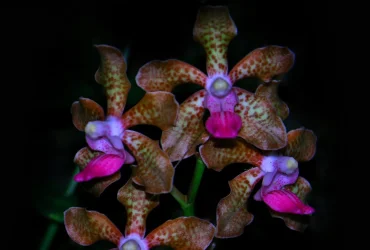 v13i2.330
v13i2.330ISSN: 1800-427X (printed)
eISSN: 1800-427X (online)
DOI:10.47605/tapro.v13i2.330
Submitted date: 23 May 2023
Accepted date: 30 September 2024
Published date: 30 November 2024
Pp. 48–61.
ENGLISH TRANSLATION OF THE ORIGINAL DESCRIPTIONS OF SNAKES DESCRIBED BY BOIE (1826)
Sean Otani* & Elmar Duensser
*Corresponding author. E-mail: otani-s@tottori-u.ac.jp
Abstract
Seven species of snakes described by Boie (1826) are currently recognized. They represent two families and six genera. Viperidae: Gloydius blomhoffii, and Colubridae: Hebius vibakari, Elaphe climacophora, E. quadrivirgata, Euprepiophis conspicillatus, Rhabdophis tigrinus, and Sibynophis geminatus. We provide the transcriptions and English translations of all seven original descriptions, which were originally written in Latin and German.
Key words : herpetology, Japan, linien, Rhineland foot
Section Editor: Patrick David
eISSN: 1800-427X (online)
DOI:10.47605/tapro.v13i2.330
Submitted date: 23 May 2023
Accepted date: 30 September 2024
Published date: 30 November 2024
Pp. 48–61.
ENGLISH TRANSLATION OF THE ORIGINAL DESCRIPTIONS OF SNAKES DESCRIBED BY BOIE (1826)
Sean Otani* & Elmar Duensser
*Corresponding author. E-mail: otani-s@tottori-u.ac.jp
Abstract
Seven species of snakes described by Boie (1826) are currently recognized. They represent two families and six genera. Viperidae: Gloydius blomhoffii, and Colubridae: Hebius vibakari, Elaphe climacophora, E. quadrivirgata, Euprepiophis conspicillatus, Rhabdophis tigrinus, and Sibynophis geminatus. We provide the transcriptions and English translations of all seven original descriptions, which were originally written in Latin and German.
Key words : herpetology, Japan, linien, Rhineland foot
Section Editor: Patrick David
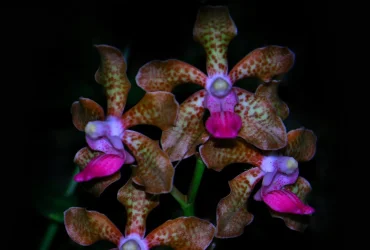 v13i2.329
v13i2.329ISSN: 1800-427X (printed)
eISSN: 1800-427X (online)
DOI:10.47605/tapro.v13i2.329
Submitted date: 15 October 2022
Accepted date: 15 October 2024
Published date: 30 November 2024
Pp. 39–47.
ARE VOLATILE ORGANIC COMPOUNDS THE SECRET TO VISITATIONS BY POLLINATORS IN THE FOOD DECEPTIVE ORCHID Vanda tessellata (ROXB.) HOOK. EX G. DON. (ORCHIDACEAE)?
R.S. Gunasekara*, K. Yakandawala, S. Jayakody, D.S.A. Wijesundara, R.M. Dharmadasa & W.A.I.P. Karunaratne
*Corresponding author. E-mail: kvrsgunasekara@wyb.ac.lk
Abstract
Vanda tessellata is an indigenous, endangered, and protected orchid species with a wide range of flower variations in Sri Lanka. The plant has high ornamental and medicinal values and therefore faces serious threats due to over-exploitation and habitat destruction. Thus, sound knowledge of pollination biology is important in the conservation and propagation of the species. The current study investigates the diurnal and nocturnal pattern of pollinators’ behaviour with the volatile fragrance profile of V. tessellata. Gas chromatography-mass spectrometry (GC-MS) analysis was carried out to identify the odour profile. The detailed GC-MS results produce 65 peaks of 36 volatile compounds. The diurnal pollinator, Xylocopa tenuiscapa (order Hymenoptera) and the nocturnal pollinator, Daphnis nerii (order Lepidoptera) visitations to V. tessellata flowers and the intensity of floral odours were well correlated proving the ability of V. Tesselatta flowers to attract both diurnal and nocturnal pollinators for successful cross-pollination.
Key words : Orchid, fragrance, odoriferous compounds, pollination
Section Editor: F.S. Robustelli della Cuna
eISSN: 1800-427X (online)
DOI:10.47605/tapro.v13i2.329
Submitted date: 15 October 2022
Accepted date: 15 October 2024
Published date: 30 November 2024
Pp. 39–47.
ARE VOLATILE ORGANIC COMPOUNDS THE SECRET TO VISITATIONS BY POLLINATORS IN THE FOOD DECEPTIVE ORCHID Vanda tessellata (ROXB.) HOOK. EX G. DON. (ORCHIDACEAE)?
R.S. Gunasekara*, K. Yakandawala, S. Jayakody, D.S.A. Wijesundara, R.M. Dharmadasa & W.A.I.P. Karunaratne
*Corresponding author. E-mail: kvrsgunasekara@wyb.ac.lk
Abstract
Vanda tessellata is an indigenous, endangered, and protected orchid species with a wide range of flower variations in Sri Lanka. The plant has high ornamental and medicinal values and therefore faces serious threats due to over-exploitation and habitat destruction. Thus, sound knowledge of pollination biology is important in the conservation and propagation of the species. The current study investigates the diurnal and nocturnal pattern of pollinators’ behaviour with the volatile fragrance profile of V. tessellata. Gas chromatography-mass spectrometry (GC-MS) analysis was carried out to identify the odour profile. The detailed GC-MS results produce 65 peaks of 36 volatile compounds. The diurnal pollinator, Xylocopa tenuiscapa (order Hymenoptera) and the nocturnal pollinator, Daphnis nerii (order Lepidoptera) visitations to V. tessellata flowers and the intensity of floral odours were well correlated proving the ability of V. Tesselatta flowers to attract both diurnal and nocturnal pollinators for successful cross-pollination.
Key words : Orchid, fragrance, odoriferous compounds, pollination
Section Editor: F.S. Robustelli della Cuna
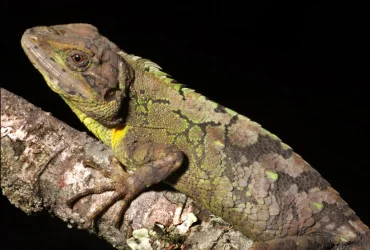 v13i1.328
v13i1.328ISSN: 1800-427X (printed)
eISSN: 1800-427X (online)
DOI:10.47605/tapro.v13i1.328
Submitted date: 17 June 2023
Accepted date: 30 April 2024
Published date: 30 May 2024
Pp. 35-38.
On news reports of the Ganges River dolphin (Platanista gangetica), Bangladesh
A.I. Barkat, R. Islam, S. Mallick & M. Rokonuzzaman*
*Corresponding author. E-mail: rokonuzzaman5128@gmail.com
The Ganges River dolphin, also known as the South Asian river dolphin or ‘Susu’, Platanista gangetica (Roxburgh, 1801) is present along the Ganges-Brahmaputra-Meghna and Karnaphuli-Sangu River systems and their tributaries, from the foothills of the Himalaya to the limits of the tidal zone in Nepal, India, and Bangladesh. The Ganges River dolphin is an obligate freshwater species, but its presence in the estuary waters of the Sundarbans mangrove forest of Bangladesh was verified. The fishermen on the Ganges River and its major tributaries in India have long practiced using dolphin oil as an attractant for certain catfish, and harpooning dolphins was outlawed in 1972, so is a rare occurrence now. However, it does not appear that dolphin deaths are decreasing. The river dolphin frequently gets entangled in fishing nets and mostly suffocates to death. The population of the species has been decreasing across its entire habitat, dropping from around 5000 individuals in 1982 to fewer than 2000 in 1997, and likely falling to around 1000 by 2003.
Section Editor: Daniel Gonzalez-Socoloske
eISSN: 1800-427X (online)
DOI:10.47605/tapro.v13i1.328
Submitted date: 17 June 2023
Accepted date: 30 April 2024
Published date: 30 May 2024
Pp. 35-38.
On news reports of the Ganges River dolphin (Platanista gangetica), Bangladesh
A.I. Barkat, R. Islam, S. Mallick & M. Rokonuzzaman*
*Corresponding author. E-mail: rokonuzzaman5128@gmail.com
The Ganges River dolphin, also known as the South Asian river dolphin or ‘Susu’, Platanista gangetica (Roxburgh, 1801) is present along the Ganges-Brahmaputra-Meghna and Karnaphuli-Sangu River systems and their tributaries, from the foothills of the Himalaya to the limits of the tidal zone in Nepal, India, and Bangladesh. The Ganges River dolphin is an obligate freshwater species, but its presence in the estuary waters of the Sundarbans mangrove forest of Bangladesh was verified. The fishermen on the Ganges River and its major tributaries in India have long practiced using dolphin oil as an attractant for certain catfish, and harpooning dolphins was outlawed in 1972, so is a rare occurrence now. However, it does not appear that dolphin deaths are decreasing. The river dolphin frequently gets entangled in fishing nets and mostly suffocates to death. The population of the species has been decreasing across its entire habitat, dropping from around 5000 individuals in 1982 to fewer than 2000 in 1997, and likely falling to around 1000 by 2003.
Section Editor: Daniel Gonzalez-Socoloske
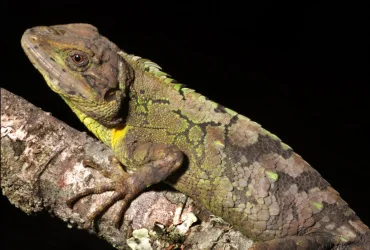 v13i1.327
v13i1.327ISSN: 1800-427X (printed)
eISSN: 1800-427X (online)
DOI:10.47605/tapro.v13i1.327
Submitted date: 27 June 2023
Accepted date: 30 April 2024
Published date: 30 May 2024
Pp. 34.
A blackbird (Turdus simillimus) predates on a Polypedates frog in Sri Lanka
D.M.D.S.M. Dissanayaka, D.E.N. Mandawala* D.M.T.M.K. Dissanayaka
*Corresponding author. E-mail: nipunika001@gmail.com
The Indian blackbird (Turdus simillimus) is the only all-black thrush found in Sri Lanka with a reddish-orange beak, feet, and eye rings and both sexes are almost identical in appearance. The feeding ecology of the blackbird is described as omnivorous with primarily animal prey, feeding on a wide range of invertebrates such as insects, spiders, snails, and earthworms. They also feed on seeds, berries, and ripened fruits when in season.
Section Editor: Aasheesh Pittie
eISSN: 1800-427X (online)
DOI:10.47605/tapro.v13i1.327
Submitted date: 27 June 2023
Accepted date: 30 April 2024
Published date: 30 May 2024
Pp. 34.
A blackbird (Turdus simillimus) predates on a Polypedates frog in Sri Lanka
D.M.D.S.M. Dissanayaka, D.E.N. Mandawala* D.M.T.M.K. Dissanayaka
*Corresponding author. E-mail: nipunika001@gmail.com
The Indian blackbird (Turdus simillimus) is the only all-black thrush found in Sri Lanka with a reddish-orange beak, feet, and eye rings and both sexes are almost identical in appearance. The feeding ecology of the blackbird is described as omnivorous with primarily animal prey, feeding on a wide range of invertebrates such as insects, spiders, snails, and earthworms. They also feed on seeds, berries, and ripened fruits when in season.
Section Editor: Aasheesh Pittie
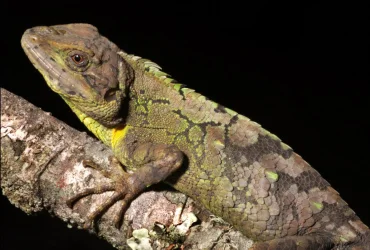 v13i1.326
v13i1.326ISSN: 1800-427X (printed)
eISSN: 1800-427X (online)
DOI:10.47605/tapro.v13i1.326
Submitted date: 26 July 2023
Accepted date: 30 April 2024
Published date: 30 May 2024
Pp. 33.
A new record of cotton pygmy goose (Nettapus coromandelianus) in Bhutan
S. Nidup, J. Tenzin* & P. Wangmo
*Corresponding author. E-mail: jigmetenzin16@gmail.com
The cotton pygmy goose (Nettapus coromandelianus Gmelin, 1789) is a dabbling duck species found in the wetlands of India, Nepal, Bangladesh, and SE Asia. The species is listed as a Least Concern due to its wide distribution and stable population estimated to be 130,000 to 1.1 million individuals. A cotton pygmy goose was sighted on 17 May 2023 at a sewage pond in Gelephu (26.858N, 90.493E) in the Sarpang District, which is located at an altitude of 200 m a.s.l in the southern central part of Bhutan. This is the first reported occurrence of pygmy goose in Bhutan.
Section Editor: Johan Mooij
eISSN: 1800-427X (online)
DOI:10.47605/tapro.v13i1.326
Submitted date: 26 July 2023
Accepted date: 30 April 2024
Published date: 30 May 2024
Pp. 33.
A new record of cotton pygmy goose (Nettapus coromandelianus) in Bhutan
S. Nidup, J. Tenzin* & P. Wangmo
*Corresponding author. E-mail: jigmetenzin16@gmail.com
The cotton pygmy goose (Nettapus coromandelianus Gmelin, 1789) is a dabbling duck species found in the wetlands of India, Nepal, Bangladesh, and SE Asia. The species is listed as a Least Concern due to its wide distribution and stable population estimated to be 130,000 to 1.1 million individuals. A cotton pygmy goose was sighted on 17 May 2023 at a sewage pond in Gelephu (26.858N, 90.493E) in the Sarpang District, which is located at an altitude of 200 m a.s.l in the southern central part of Bhutan. This is the first reported occurrence of pygmy goose in Bhutan.
Section Editor: Johan Mooij
Hubungi Kami
The ultimate aim of the journal is to provide an effective medium for communication of the latest and best scientific information.
Copyright © 2020 Taprobanica. All Rights Reserved
Jasa Pembuatan Website by IKT




